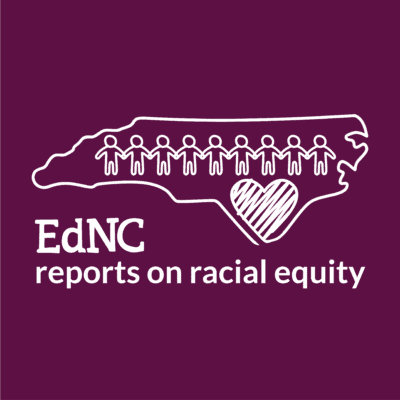
A task force formed by the State Board of Education has suggested sweeping changes to the testing landscape in North Carolina.
To test the new plan, the State Board of Education is instituting a proof of concept study to examine the feasibility of the changes. The Board heard a update on the study during their Wednesday Board meeting. The study starts this year, and here’s what you need to know.
What new tests?
The new testing model includes three interim assessments during the year, and one summative assessment — a modified EOG — at the end. The hope is that the interim assessments will help teachers better instruct students, as well as giving some indication of how students will do on future tests.
What about the assessments?
The study will look at three interim assessments and one modified EOG. The interim assessments won’t be used to calculate teacher effectiveness or student achievement, but the modified EOG will.
Who does it affect?
The Proof of Concept Study starting this year will test some 5th grade students in math and some 6th grade students in English.
The study will not affect all North Carolina students. The state has taken a sample of schools and students to reflect the diversity of the state. Between 3,500 and 4,500 students in each grade will be tested, for a total of between 7,000 and 9,000 students.
When?!
Here are the windows in which the tests will take place:
- Test one: October 1-30, 2015
- Test two: December 8, 2015-January 22, 2016
- Test three: March 3-31, 2016
- The modified EOG will take place the normal testing window
What happens next?
The results of the study this year will be analyzed to determine if the state should hold a field test the following year and a pilot the third year.
Many school districts have their own benchmark tests that they give students. But for the study, the state is suggesting they not administer these tests in the same subjects being tested by the state.
What else should I know?
Here are some “quick facts,” taken directly from an assessment brief given to the State Board Wednesday.
Quick Facts about the Grade 5 Mathematics Interim Assessments
The interim assessments include multiple-choice and gridded-response items.
Gridded-response items require students to write a numerical answer in the boxes provided on their answer sheet and then bubble the circles that match what they have printed in the boxes.
The interim assessments consist of two parts: calculator inactive and calculator active.
Students are not allowed to use calculators during the calculator inactive part of the assessment.
Students are allowed to use calculators during the calculator active part of the assessment.
The interim assessments contain 25 total items (8 multiple-choice and 4 gridded-response items that are calculator inactive; 13 multiple-choice items that are calculator active).
Students with disabilities will use the same accommodations for interim assessments that are specified in their current Individualized Education Programs (IEPs), Section 504 Plans, or LEP documentation for the regular EOG assessment. The IEP, 504, and/or LEP teams do not have to reconvene and document the accommodations for the Proof of Concept Study.
Quick Facts about the Grade 6 English Language Arts/Reading Interim Assessments
The interim assessments include multiple-choice items.
Interim 1 contains 20 multiple-choice items.
Interims 2 and 3 contain 20 items (19 multiple-choice and 1 constructed response).
The constructed response item is a short answer and can typically be answered in a paragraph or less. Students will write their responses on the lines provided on the answer sheet.
Students with disabilities will use the same accommodations for interim assessments that are specified in their current Individualized Education Programs (IEPs), Section 504 Plans, or LEP documentation for the regular EOG assessment. The IEP, 504, and/or LEP teams do not have to reconvene and document the accommodations for the Proof of Concept Study.
Quick Facts about the Modified End-of-Grade Assessment
Students will have an assessment book that will contain either the modified English Language Arts/Reading or Mathematics assessment and the regular EOG assessment (i.e., the grade 5 assessment book will contain the regular English Language Arts/Reading EOG and the modified Mathematics EOG; the grade 6 assessment book will contain the regular Mathematics EOG and the modified English Language Arts/Reading EOG).
The modified EOG assessment contains only multiple-choice questions.
Students with disabilities will use the same accommodations for the modified assessment that are specified in their current Individualized Education Programs (IEPs), Section 504 Plans, or LEP documentation for the regular EOG assessment. The IEP, 504, and/or LEP teams do not have to reconvene and document the accommodations for the Proof of Concept Study.
The modified EOG assessment will be included in accountability and teacher effectiveness calculations.
Here is the assessment brief.
Here are FAQs about the proof of concept study.



